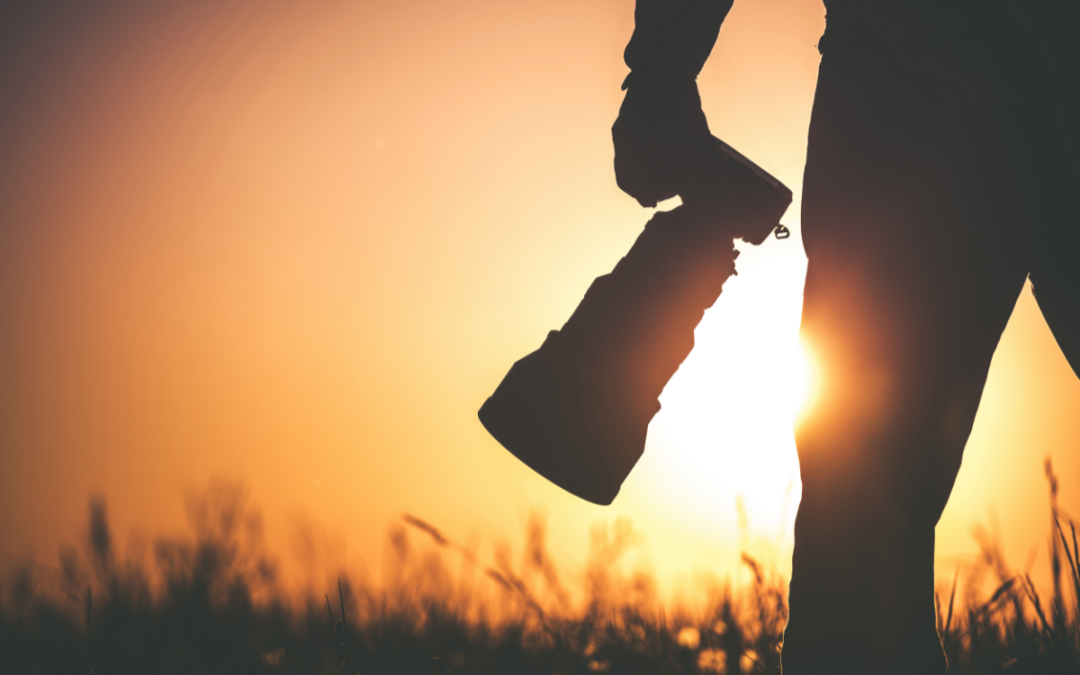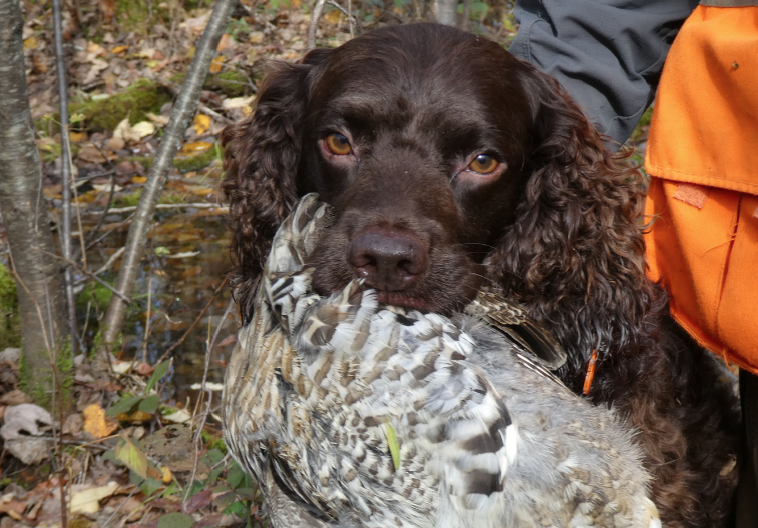Show the world of hunting to people like they’ve never seen before using these simple tips that will enable you to tell your story through photography.
For as long as man has hunted, we as hunters have recorded and shared our hunting stories since the beginning of time. Tales of the hunt were told and passed on around campfires. These adventures were retold through words, hand signals and gestures, which evolved into drawings in the dirt and scrapings onto rocks and cave walls, and eventually through written language. These moments then evolved into drawings and illustrations in books. Photographs came onto the scene in the 19th century. Since then, photography, and more specifically, hunting photography, has the visual means to tell our story.
Hunting Photography Then and Now
Ah, photographs. In the beginning a man standing behind a peculiar black box atop a tripod of legs, would emerge from underneath a black drape and billowing smoke to declare to the men with a string of prairie chickens (there were no regulations back then folks), that the photograph was a success. The advent of the hunting portrait photo had been invented. The men depicted appeared without emotion alongside their kill. There was no creativity behind hunting photography during that time. How things have changed. Or have they?
Photographs are easier than ever to take, and you don’t have to have an expensive camera to do it. Cellphone cameras and their technology have advanced so much that it delves into the realm in which professional images can be captured by just about anyone. Today’s camera phones feature megapixels in the double digits, are equipped with optical zoom, red eye features and the capability to shoot high-definition video – everything a hunter needs to capture the moment and tell their story of the hunt.
Pictures are there to remind us of our adventures and memories in the fields, woods and waters. Photographs carry a lot of power within themselves. So, doesn’t it make sense to take a little bit of time to better our hunting photography skills, other than the common “grip-n-grin” or a tailgate full of birds? Don’t get me wrong. These two classic poses have their place in our history as bird hunters, but we owe it to ourselves to do something more creative, more personal and with more depth.
Photography and hunting are intricately linked now more than ever with the use of our cellphones. It is no surprise that cell phones have become part of our everyday gear list. Hunters in general should take advantage of the technology and advancements in cell phones. Being able to capture images like a professional becomes a simpler task than one may think.
Show the world of hunting to people like they’ve never seen before using these simple tips that will enable you to tell your story through photography.
Be Creative!
Here are 15 simple ways to improve your hunting photography skills.
1. Start with an Interesting Subject
Have an interesting subject in your photo. Tell a story.
2. Follow the Rule of Thirds
The Rules of Thirds (grid) can help you decide where your subject should be placed in relationship to the rest of the scene. Enable your cell phone and/or camera’s grid to help you take better photos. Position the main subject off center along the grid lines or at the intersections where the lines meet.
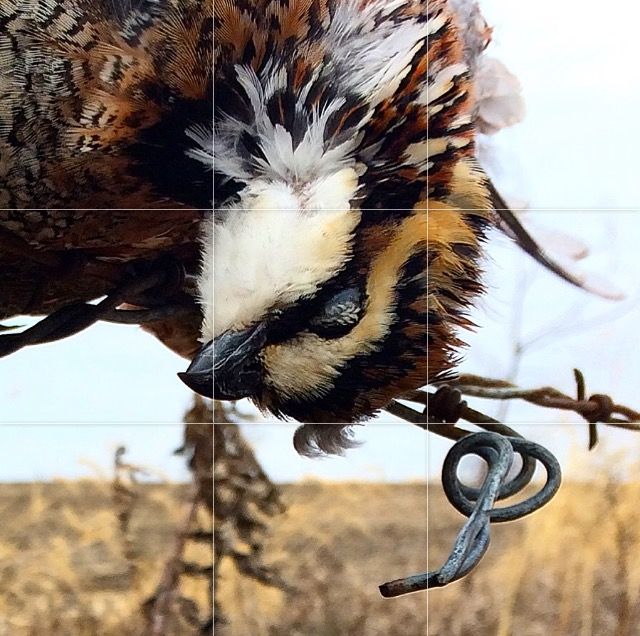
3. Silhouettes
Take silhouette photos by shooting against the light source (sunrise/sunset).
4. Shadows
Make shadows part of your photos.
5. Reflections
Use reflections to enhance your photos. Waterfowlers benefit from this trick the best.
6. Work Your Angles
Take photos from a unique angle. Utilize a phone holder, tripod, Bluetooth remote and yes…even selfie sticks. Use these items in conjunction with each other.
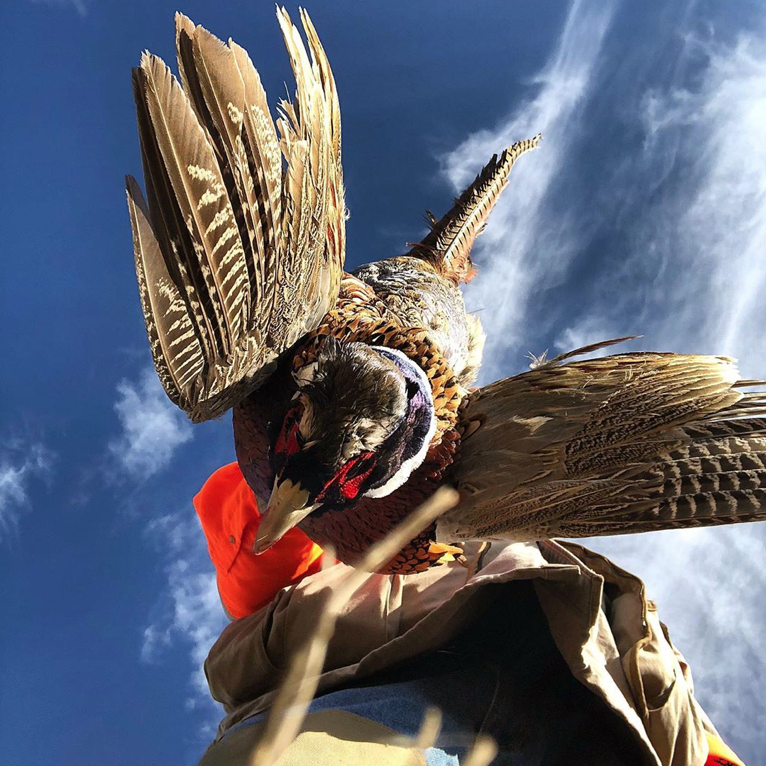
Hold or position the camera or cell phone from a unique angle to gain a different perspective. In this image, I used my iPhone’s timer with the camera lens pointing up to capture this great photo.
7. Use a Camera Tripod
A tripod will help ensure to keep your cellphone or camera steady and take blur-free photographs and enable more camera & phone angles. I like to use a small lightweight tripod. Something compact, super easy to set up, and affordable. Many outdoor backpacks and some technical upland vest packs are designed so that tripods can be easily attached or stowed so traveling with them is hassle-free.
Look for tripods with features such as multiple leg angle positions so you can set up your camera at unique angles and on uneven surfaces like rocks.
If you’re hunting solo, you must use a tripod. If you have a hunting partner or two, a tripod enables you to capture full-crew shots, too.
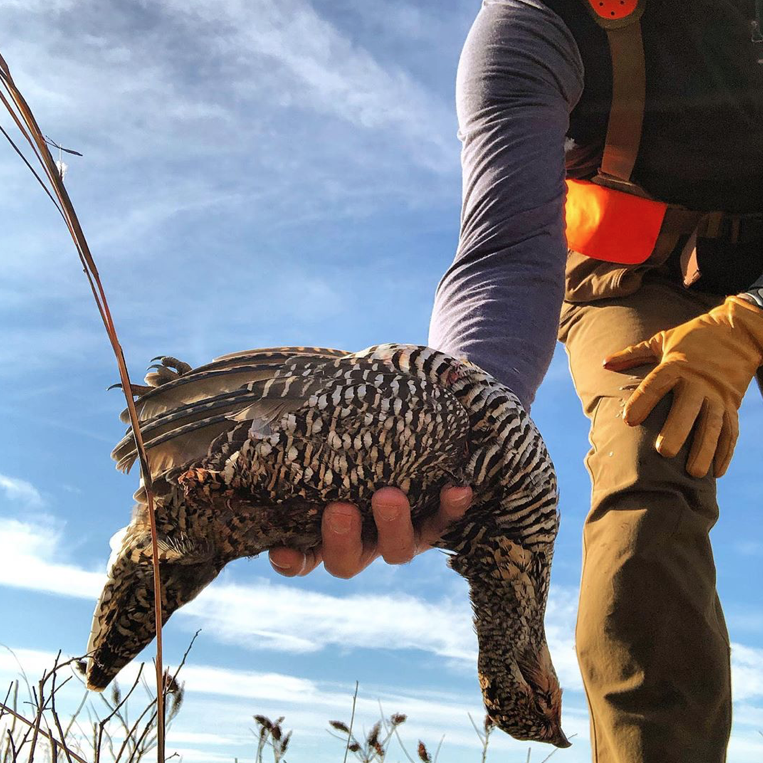
Using a compact tripod and my iPhone’s timer, I was able to capture this trophy prairie chicken while hunting solo.
8. Keep Your Hunting Photography Simple
Simplicity is the key; minimizing distractions in your photos allows you to highlight the subject better.
9. Utilize Negative Space
Use lots of negative space; place the horizon line low in the frame or corner.
10. Try Partial Photos or “Cut-Off” Hunting Photography
Partial photos focus on specific parts of the subject. Focus on something not normally seen or focused on. Give the viewer something new.
Using what I like to call “Partial” or what photographers call, “Cut-Off Photography” to create more interesting photographs. Just what it sounds like, it’s when you capture only a section or part of something instead of the whole image. In what I have gathered, it used to be a strict rule of photography to never “cut-off” portions of the subject matter.
Why use, this technique? Because, sometimes there are parts of the image that can tell the story or invoke a feeling, attitude, or moment better than the picture as a whole. We all know what a pheasant or grouse looks like, but when we focus on particular parts, such as a fanned-tail or colorful plumage of a rooster, then we are capturing pieces of the bird that mesmerizes us to pursue it.
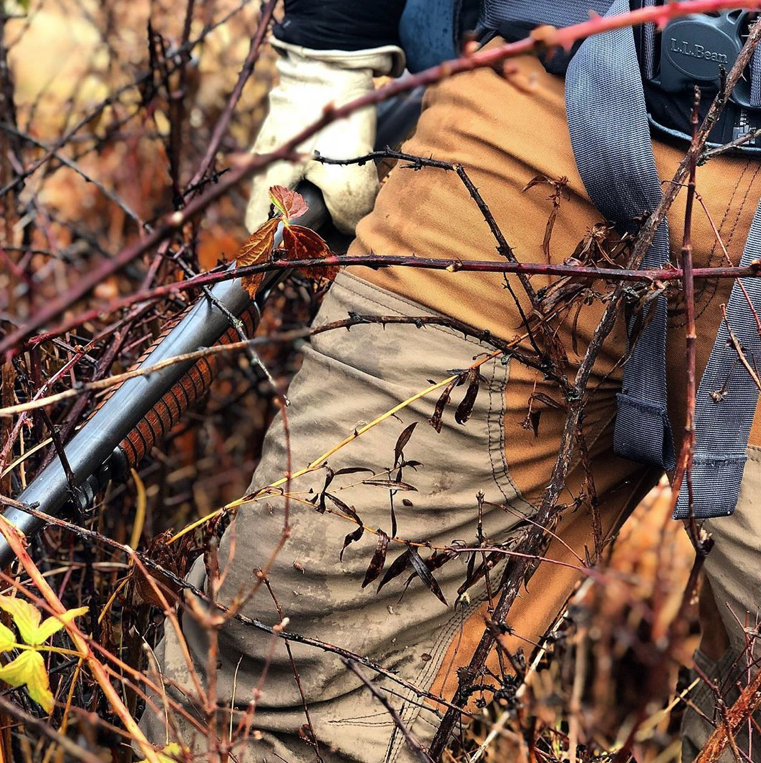
This photo focused on the perils of hunting in heavy brush.
By cutting off an image, it may leave the viewer more to interpret, rather than the brief once over some photos get after a while of seeing the same style of photos.
This approach can also be used when you have a photo that may have not turned out quite right. But, by “cutting off” or using part of it, the photo works.
There are NO hard rules about when it comes to “Partial” or “Cut-Off” Photography. The very thought about intentionally cutting off an image and only focusing on a portion is unconventional. This approach with a little creativity added in can create something unique and interesting in photographs.
11. Get Closer with Macro Shots
Macro Photography is extreme close-up photography. When you get close to that 2-inch mark — especially if you have other items in the background — most phones will occasionally try to snap its focus back from your macro image to whatever else is in frame. To prevent that, tap and hold on your focus point until you see “AE/AF Lock” appear; until you tap the screen again, your iPhone will stay locked to your macro subject’s focus point.
12. Find Your Light
Locate the perfect balance of light and dark: indirect sunlight. This will enhance the details in the subject. If using your cellphone, use AE/AF lock for a clear shot.
13. The Power of Portrait Mode for Hunting Photography
Portrait mode is a wonderful tool! By using Portrait Mode, the camera creates a depth-of-field effect, which lets you capture photos with a sharp focus on the subject and a blurred background. This can be used with both up close and farther away shots.
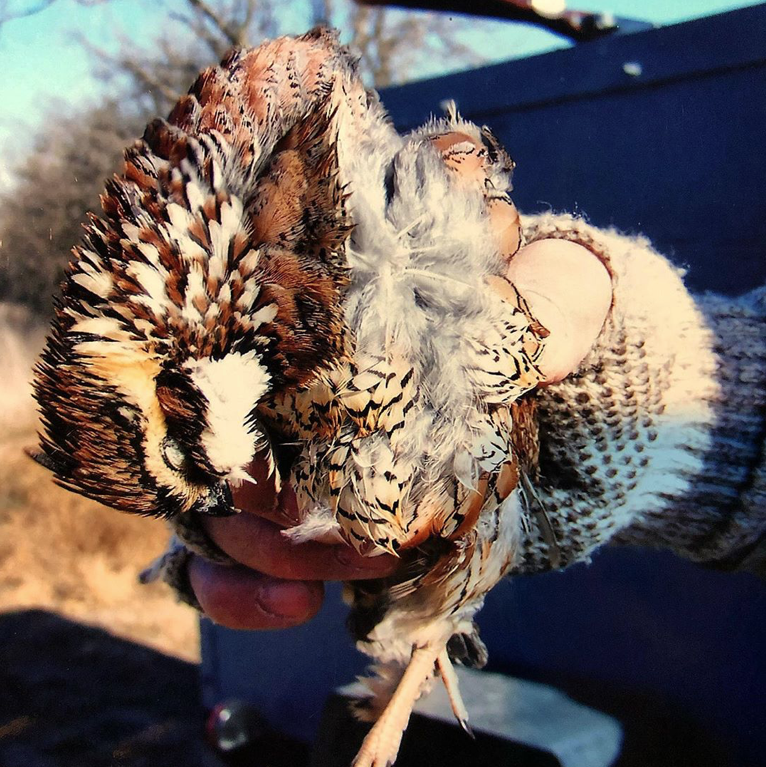
Using Portrait Mode blurs out the background, enhancing the focus of the photo.
14. The More Hunting Photos, The Merrier
Take lots of photos when hunting. Why? Because you might get a great photo or two! These days, taking photographs is easier than ever before. There’s a reason professional photographers take dozens of shots of the same subjects.
Use the extra shots to be creative. Taking lots of photos from different angles and focal points, as well as with and without a flash, will give you a variety of images to choose from.
When you’re back at home reminiscing about the hunt, you’ll be kicking yourself for not getting at least a few more pictures. It’s worth the extra few minutes getting more frames of your surroundings, breathtaking landscapes, the journey, the gear and of the hunt.
15. Combine Techniques and Tips
Now obviously, none of these techniques will work perfectly on their own every single time, but with practice the desired results will eventually present themselves. By combining any of these strategies, you should be able make your photos stand out.
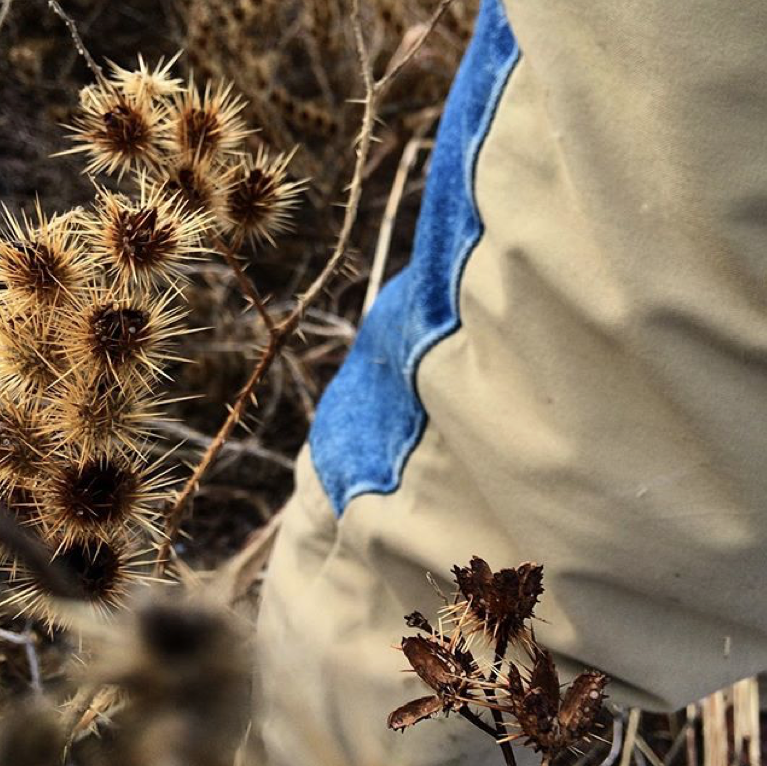
Use a variety of techniques and combine them. Here we have an Interesting Subject, Rule of Thirds, Unique Angle and Partial Photo.
Tell Your Own Story Through Hunting Photography
In closing, I am by no means a photographer. I have absolutely no formal training, education or experience. But I have learned a couple of things following certain photography guidelines as well as ignoring some rules to capture what I think is unique. My goal is to capture the moment and present it in a way that shows my passion for upland hunting from a different and unique perspective. I was guilty of taking the same old photos myself. However, when my daughters told me to be unique and show another side to bird hunting, it struck a chord.
I have taken rules such as never taking photos with distracting elements in the shot and tossed them aside. Why not take the photograph with branches and grass cutting across the image? It’s part of the surroundings. We are hunting in the wild. Some of you may not agree with me and that’s OK.
I take most of my own photographs as I hunt and as I come across interesting things, landscapes, images and surroundings. I simply set up the tripod or whichever means I am employing to take photos and with a couple of quick hits of the button, I have photographs. Usually, it only takes a minute or two, then I’m back on track and on the hunt. My focus is and always will be hunting.
In the end, some photos may turn out, some may not. If an image does present itself to me that it takes me back to the moment I remember bustin’ through brush, or conjures up emotions of excitement when a covey of quail erupts from the ground, to feelings and memories of watching the dog go on point or the smile from a friend who just shot his first bird, then the photo I took no matter what rules I followed or not has done what it was supposed to do…it captured a memory. A photograph that will tell part of a story. My story. My upland journey.
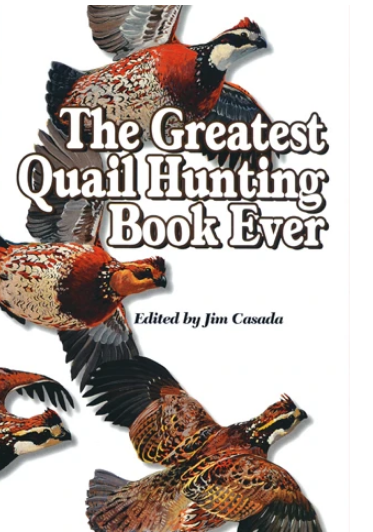 This fascinating anthology showcases 38 wonderful stories from those halcyon days when sporting gentlemen pursued the noble bobwhite quail with their favorite shotguns and their elegant canine companions.
This fascinating anthology showcases 38 wonderful stories from those halcyon days when sporting gentlemen pursued the noble bobwhite quail with their favorite shotguns and their elegant canine companions.
Will the sweet sound of whistling wings, the heart-stopping beauty of a sunset point, the timeless partnership of a man and a dog wise in the ways of wild birds ever return? Perhaps, but for now we can rejoice in the fact that we can, through the writings of some of the finest sporting scribes America has ever produced, experience those golden days vicariously.

